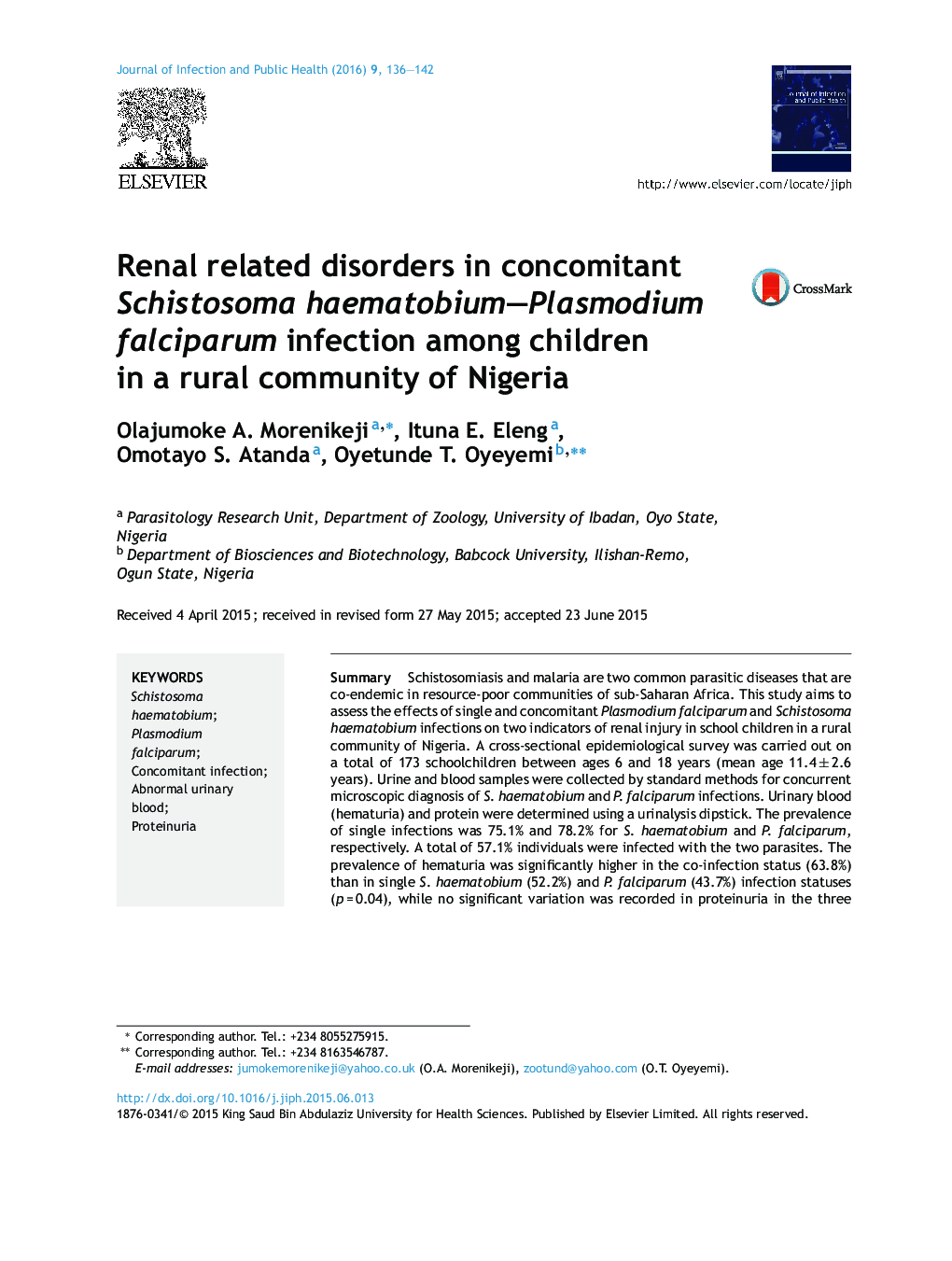| Article ID | Journal | Published Year | Pages | File Type |
|---|---|---|---|---|
| 3405868 | Journal of Infection and Public Health | 2016 | 7 Pages |
SummarySchistosomiasis and malaria are two common parasitic diseases that are co-endemic in resource-poor communities of sub-Saharan Africa. This study aims to assess the effects of single and concomitant Plasmodium falciparum and Schistosoma haematobium infections on two indicators of renal injury in school children in a rural community of Nigeria. A cross-sectional epidemiological survey was carried out on a total of 173 schoolchildren between ages 6 and 18 years (mean age 11.4 ± 2.6 years). Urine and blood samples were collected by standard methods for concurrent microscopic diagnosis of S. haematobium and P. falciparum infections. Urinary blood (hematuria) and protein were determined using a urinalysis dipstick. The prevalence of single infections was 75.1% and 78.2% for S. haematobium and P. falciparum, respectively. A total of 57.1% individuals were infected with the two parasites. The prevalence of hematuria was significantly higher in the co-infection status (63.8%) than in single S. haematobium (52.2%) and P. falciparum (43.7%) infection statuses (p = 0.04), while no significant variation was recorded in proteinuria in the three infection statuses (p = 0.53). The proportion of children with renal injury associated with the co-infection of these parasites is very high, particularly in young children, who seem to have a higher prevalence of hematuria.
